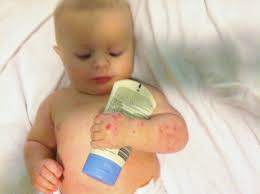Staph infections, or golden staph, are bacterial infections caused by Staphylococcus aureus, or S. aureus bacteria. Staph bacteria live on the skin and in the nose, but they can cause infections if they enter a cut, sore, or other wound. Good hygiene is the best way to prevent a staph infection. Some strains of bacteria have become resistant to commonly used antibiotics. This means that staph infections can sometimes be hard to treat.
What causes staph infections?
When bacteria that are normally present on the skin get into an open wound, like a sore or cut, they can cause skin infections such as boils, abscesses, and impetigo (school sores). Staph bacteria can spread from person to person, and even on inanimate objects that have been handled by someone with a staph infection.
Are staph infections serious?
Most staph infections are not serious and are easily treated. However, some bacteria have become resistant to antibiotics and are included in a group of MROs (multi-resistant organisms). Strains of staph bacteria that include MROs are called MRSA, Methicillin-resistant strains of S. aureus, and VRSA vancomycin-resistant strain of S. aureus, according to the antibiotic that they resist. In very serious cases, staph bacteria can infect the heart, lungs, bones and bone marrow, veins, and brain. In rare cases, staph infections can lead to a condition called sepsis, where the infection enters the bloodstream. Sepsis can cause death.
Can I prevent staph infections?
Thorough and frequent hand washing can prevent staph infections. Clean and cover all wounds, and teach your kids to avoid sharing towels, razors, athletic equipment, and other personal items with their friends. Staph bacteria can live longer on inanimate objects than some other bacteria, making it easier to get staph infections from inanimate objects.
How do I know if my child has a staph infection?
Symptoms of a staph infection include pimples, sores, boils, and abscesses. You can’t tell the difference between a mild staph infection and MRSA/VRSA by looking. Your child’s doctor can do a test that can determine which type of infection your child has. A staph infection may also be accompanied by a fever.
How do I treat staph infections?
Staph infections are hard to treat because so many antibiotics no longer work against them. Penicillin works on less than one in ten staph infections and methicillin works on fewer than half. Your child’s doctor may need to try several different kinds of antibiotics to clear up your child’s staph infection. Identifying the type of staph bacteria involved, may help your doctor decide the best form of treatment.
If your child has a staph infection, he may need to be hospitalised for treatment and may be isolated from others during treatment. Make sure that he does not share personal items with friends or family members and wash his clothing, towels, and bedding thoroughly and separately.
Should I call the doctor?
Always call the doctor for treatment if you suspect your child has a staph infection. He will need treatment to prevent serious complications and to avoid infecting others.
What you need to know:
- Staph bacteria, which normally sit on the skin and in the nose, cause staph infections.
- They can be serious if they spread to the organs or the bloodstream.
- Staph infections can be hard to treat because many bacteria have become resistant to antibiotics.
- Infections are spread through contact with infected persons or contaminated items.
Written by Rebecca Stigall for Kidspot, New Zealand’s parenting resource for family health.







Leave A Comment
You must be logged in to post a comment.